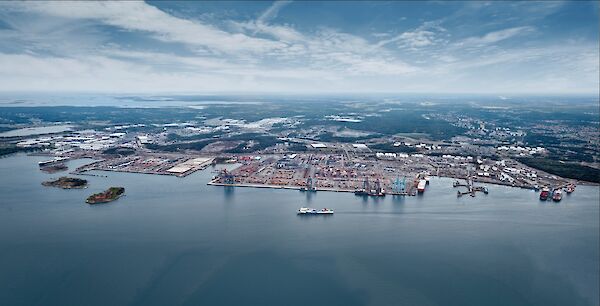Tuesday, August 29, 2023 - 09:39 by ce-press
A project aimed at enhancing knowledge about the potential for Nordic ports to serve as energy hubs in hydrogen-based energy system solutions, H2AMN (hydrogen, ammonia and methanol) ,has been approved by The Energy Agency (Energimyndigheten).
The Port of Gothenburg is a partner in the three-year, SEK 20million (€1.7million) project and is involved with two of the seven work packages. One is looking at how Gothenburg can play a role in the whole hydrogen society with a 2030/40 perspective and the other is to look at storage, explains Therese Jallbrink, head of renewable energy Port of Gothenburg.
“We believe we can be an important player in storing, loading and possibly also generating hydrogen. With local refineries as potential off-takers for their future production, this will be an advantage for next year’s pilot project,” adds Christoffer Lillhage, senior business development manager, energy and cruise at the port.
In terms of storage, the port wants to investigate whether the onsite rock caverns can be used for storing hydrogen or ammonia in the future. Although it does not own the rights, it is keen to assess the future possibility with the help of researchers experienced in geo technology. The caverns of differing sizes were built after World War 2 as energy reserves and can handle as much as 600,000m3 of crude oil today. Lillhage comments that salt caverns in Germany and The Netherlands are now being developed as hydrogen storage in two different pilot projects and “we hope that our infrastructure assets can play the same role for the future energy transition”.
While the project will potentially enable large-scale hydrogen production in the future, the port is presently working on a smaller scale facility. “The plan is that in 2024 we should start the production of hydrogen using a small electrolyser. This will give us a 4.5 to 5mW production facility producing about 2t per day which can be used for applications that might use hydrogen. We don’t know what they may be but it might be trucks and other applications in terminals. It could also provide hydrogen for vessels coming into the port that run on hydrogen, or to supply a power cell for electricity on board etc,” explains Jallbrink.
“We have been discussing with a few cruiselines very early to see if it is possible for them to use that hydrogen, for example switching containers here, but that needs to be looked at in much more detail,” adds Lillhage.
Statkraft, a Norwegian energy company, is now getting the licences in place for starting hydrogen production in the Port of Gothenburg but it also has to take the final investment decision with 2024 looking promising to start.
Lillhage believes that being able to provide alternative fuels will give the Port of Gothenburg a competitive edge over its neighbours not just for cruise but cargo companies. “We were quite early to realise that we need to provide all these alternatives to reach our emission targets and to stay competitive as a bunker port.”
One thing is certain, as Jallbrink explains: “We are not here to do this alone. The Port of Gothenburg will play an important part of this puzzle being a neutral player and facilitator of the energy transition. But when it comes to the regulatory and safety framework for hydrogen and ammonia it will be very helpful to collaborate between ports/nations in the project to save time. We need action now. If we do it together it will be much quicker and will also mean sharing the costs.”
